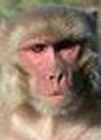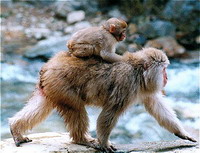Official Symbol of Brit-Am

Brit-Am
DNA and
Anthropology Updates
Brit-Am
Research
Revelation
Reconciliation
The Brit-Am Rose
Official Symbol of Brit-Am

| Site Contents by Subject |
Home Research Revelation Reconciliation |
Publications |
Site Map Contents in Alphabetical Order |
|
This Site |
Shalom Yair:
The connection here between skin color and climate (environment) is not totally clear to me. Traditional teaching, i.e. when I was in school in the 1950s, was that people living in the "torrid zone", usually meaning Africa, experience about 12 hours of intense sunlight, daily, for the entire year; thus they tanned and became darker and darker over generations. (Obviously this assumes that humans were originally white.) Despite my lack of knowledge of DNA, I find this explanation for the black skin of people living in the "torrid zone" to be false. Any explanation that black people became white because of living in a Nordic environment must also be false.
What about the Congo Republic? I find from the website "weather underground" (wunderground-dot-com) that the climate of eastern Congo is very cool because of high altitude, constant cloudiness and frequent rains. Yet the skin color of the people living there is black. Pygmies also live in the jungle of the Congo, where there is shade, yet their skin is also black. Conversely, in the Amazon jungle there are native tribes whose people go about naked, except for loin cloths, yet their skin color is pale compared to Africans and is similar to other native Americans or Amerinds as you refer to them.
Jay
Brit-Am
Reply:
See our notes on Race:
http://www.britam.org/Questions/QuesRace.html#Middle
See also our observations about different racial coloring in monkeys:
"Brit-Am Now"-613
#2. Macaque Monkeys: Racial Coloring and Environment
http://britam.org/now/613Now.html
The Macaque Monkeys are often found in cold climates where there is snow.
They also frequently have light pink skin (on their faces where is no fur), blue
eyes,
and platinum blond hair.
Are these monkies "Aryans"?
 |
 |
 |
Join the Brit-Am Ephraimite Discussion Group
Just Send an
e-mail
with "Subscribe"
in the Subject Line
Main Page
Offerings and Publications
Return to
Question and Answer
Table of Contents